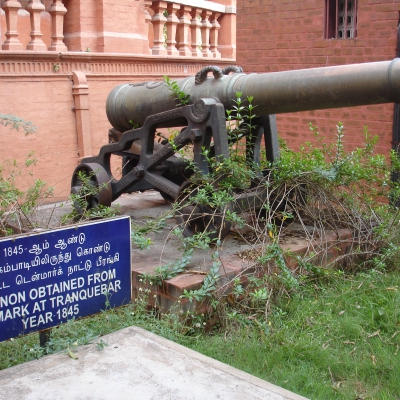Government Museum Ooty - Tamilnadu

Popular hill station and tourist attraction Ooty, formerly known as Udhagamandalam, is tucked away in the gorgeous Nilgiri Hills of the southern Indian state of Tamil Nadu. Over a century has passed since the rolling hills, verdant forests, and mild climate of this picturesque town made it a popular retreat for tourists looking to escape the heat and bustle of the lowlands. Ooty is well-known for its scenic surroundings, but there is a lot more to this quaint town than meets the eye. The Government Museum in Ooty is one such hidden gem; it is a veritable gold mine of knowledge regarding the history, customs, and traditions of the area as well as the entirety of India.
It’s a must-visit place for anybody curious about India's rich and varied cultural legacy. The main objective of the 1989 establishment of the Government Museum in Ooty was to conserve and promote the cultural legacy of the Nilgiri district. The museum occupies a stunning colonial-era building that served as the assistant collector of the Nilgiris' home at one point. Showcasing the museum's varied collections, which cover a wide variety of themes from botany and geology to archaeology and anthropology, is made possible by the building's exquisite architecture and roomy interiors.
A wide and diverse collection of items, many dating back thousands of years, can be found at the Government Museum in Ooty. These include stone tools, pottery, coins, inscriptions, weaponry, and sculptures. The lives and cultures of the people who have lived in the Nilgiri region and throughout India over the ages are fascinatingly revealed by these artifacts. The museum's collection of prehistoric stone artifacts, which date back to the Stone Age and show proof of the oldest human occupancy in the area, is one of its main attractions. The museum also has a sizable collection of pottery, some of which is from the Megalithic era and offers important insights into the methods and customs of the area's prehistoric ceramicists.
The numismatic collection of the museum, which includes coins from the Maryann and Gupta empires to the Mughal and British Raj, is another important attraction. Rare and intriguing coins are included in the collection, including the gold coins of the Chola dynasty, which dominated a large portion of southern India from the ninth to the thirteenth centuries, and the well-known "company coins" that the British East India Company produced while they were in India. The Government Museum in Ooty also houses an extensive collection of manuscripts, documents, and inscriptions, many of which are written in the historic Grantha and Tamil scripts. These artifacts offer important insights into the literary and linguistic traditions of the area.
The Government Museum in Ooty has exhibits on the local flora and fauna in addition to its historical and archeological holdings, with an emphasis on the distinctive and varied species found in the Nilgiri Hills. Displays on the region's unique and endangered species may be seen in the museum's natural history section. Examples of these species include the Nilgiri Marten, a small carnivorous animal that is indigenous to the region, and the Nilgiri Tahr, a form of wild goat that is only found in the Nilgiri Hills. Significance and Importance: The Government Museum in Ooty was founded in 1989 and is a tribute to the city's rich cultural tapestry and rich heritage. This amazing museum, which locals often refer to as the Stone House or the Kal Bungalow, is situated along In addition to being an invaluable tool for academics, researchers, and history buffs, the Government Museum in Ooty offers tourists a fantastic chance to discover more about the rich and varied cultural legacy of India. With a deeper understanding and respect of the people and cultures that have influenced the Nilgiri Hills and the rest of India over the millennia, the museum's collections offer a distinctive and captivating approach to exploring the history, art, literature, and traditions of the area. The Government Museum in Ooty’ s outstanding collection of tribal artifacts, which portray the way of life and customs of the several tribes that call Tamil Nadu home, is one of the museum's main attractions. The Toda Tribe, which has greatly influenced the identity of the area, is given particular focus in the museum. The tribespeople's jewelry, dress designs, sculptures, crafts, and farming tools are all on display for visitors to view.
The Ooty Government Museum's outstanding collection of diverse tribal artifacts, which represents the way of life and culture of Tamil Nadu's tribes, is its main attraction. The 18 tribes that call Ooty home are given special attention by the museum, with a focus on the Toda Tribe, which has been essential in forming the identity of the area. The Toda tribe is well-known for its pastoral lifestyle, and this museum features a wide range of exhibits that highlight their unique customs and practices. Visitors can examine the crafts, sculptures, jewelry, traditional homes, clothes, and farming tools used by the tribespeople here. Because of this, the Government Museum in Ooty is a must-see destination for anybody curious about the way of life, customs, and society of the indigenous tribes who reside in Ooty.
The Government Museum in Ooty Visiting Time:
10 a.m. to 5 p.m.; Fridays and second Saturdays are closed.
Government Museum Ooty entry fee:
Free.
How to reach the Ooty Government Museum:
By Air:The museum is located approximately 87.9 km from Coimbatore International Airport.
By Rail: 83.4 km distant at the Coimbatore Railway Station. To go to Ooty, you can also take the Toy Train from Mettupalayam via Coonoor. To go to the museum, you can take public transportation from the train station or hail a cab or taxi.
By Road: The museum is approximately 3.2 km from the Udhagamandalam Central Bus Stand.